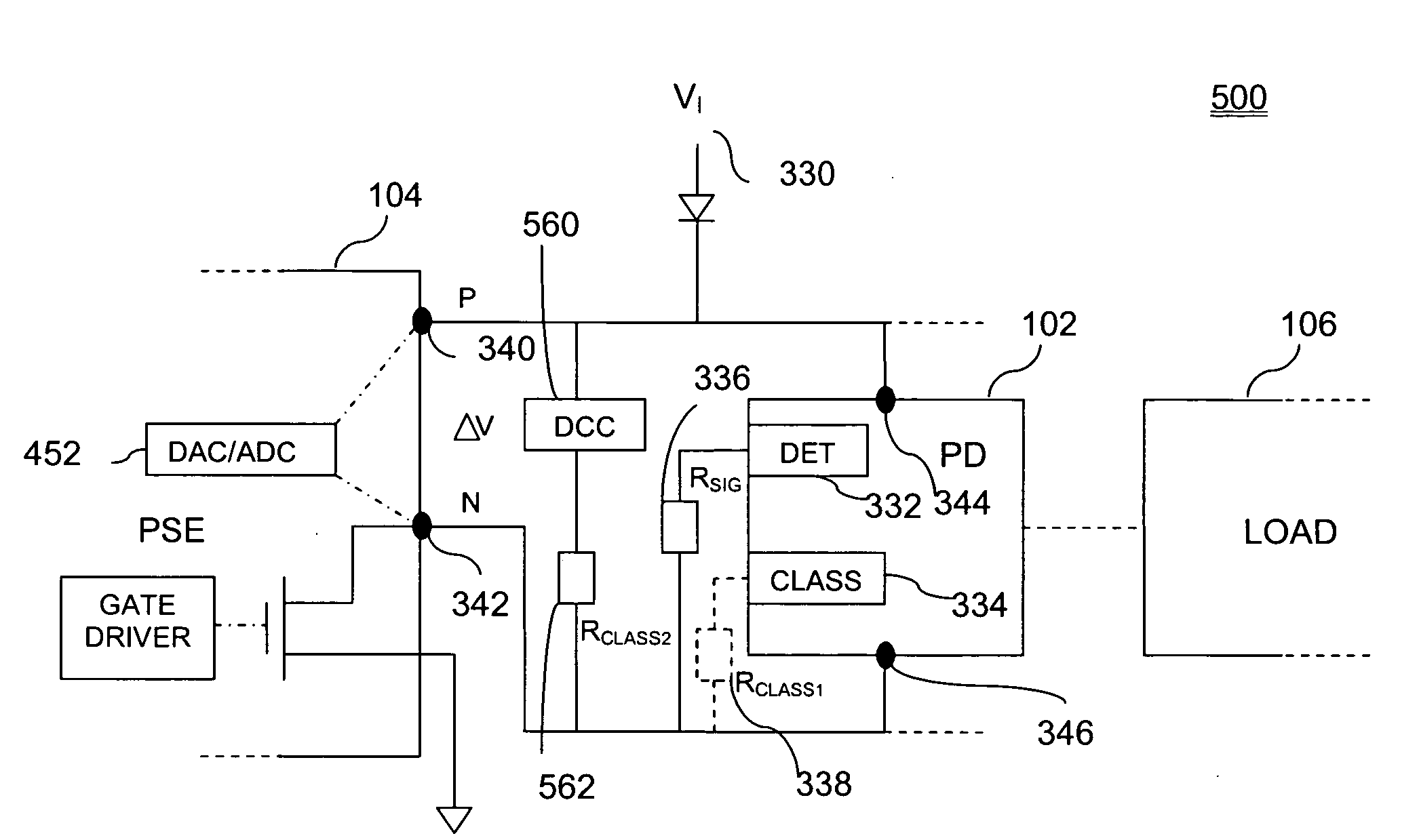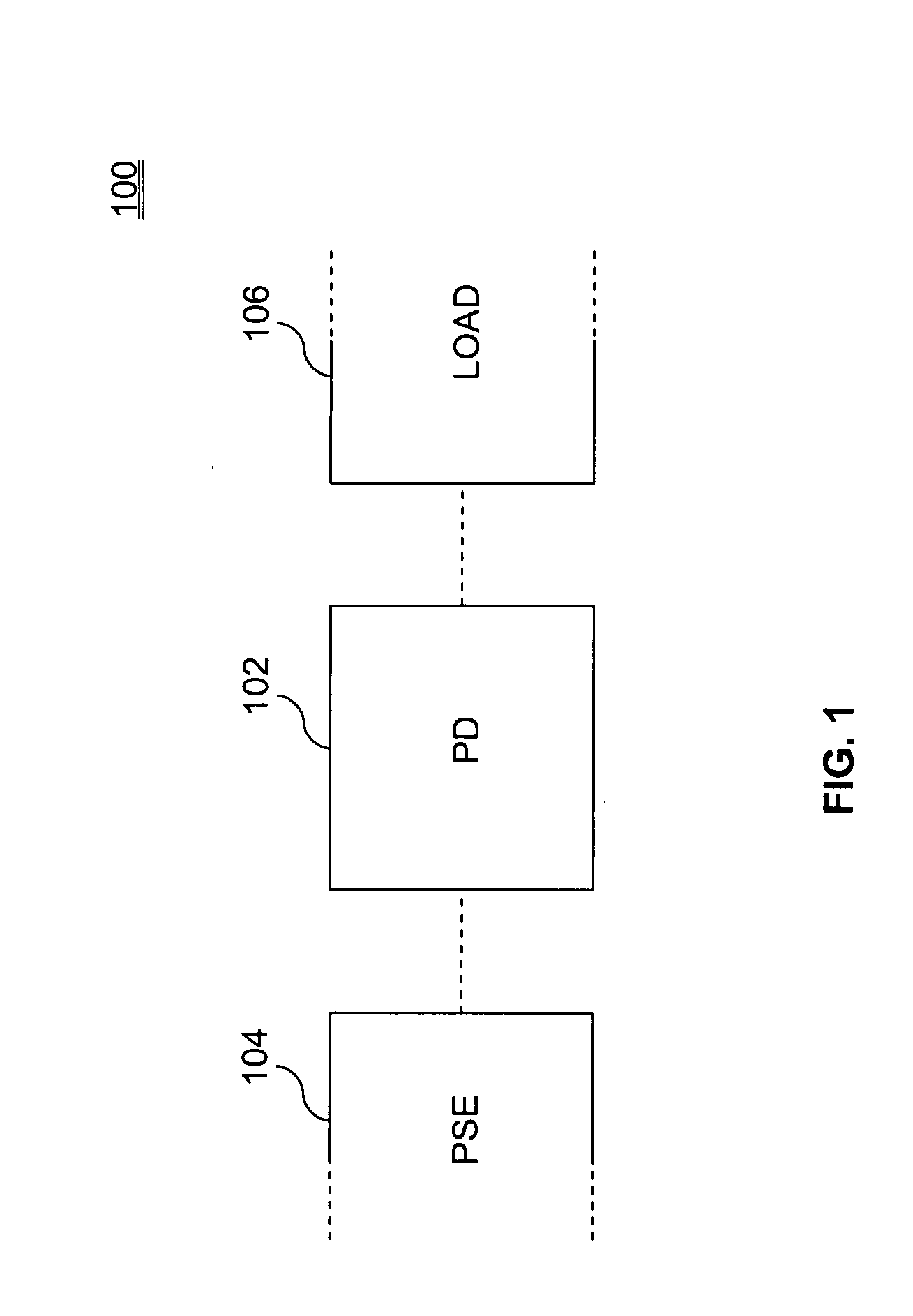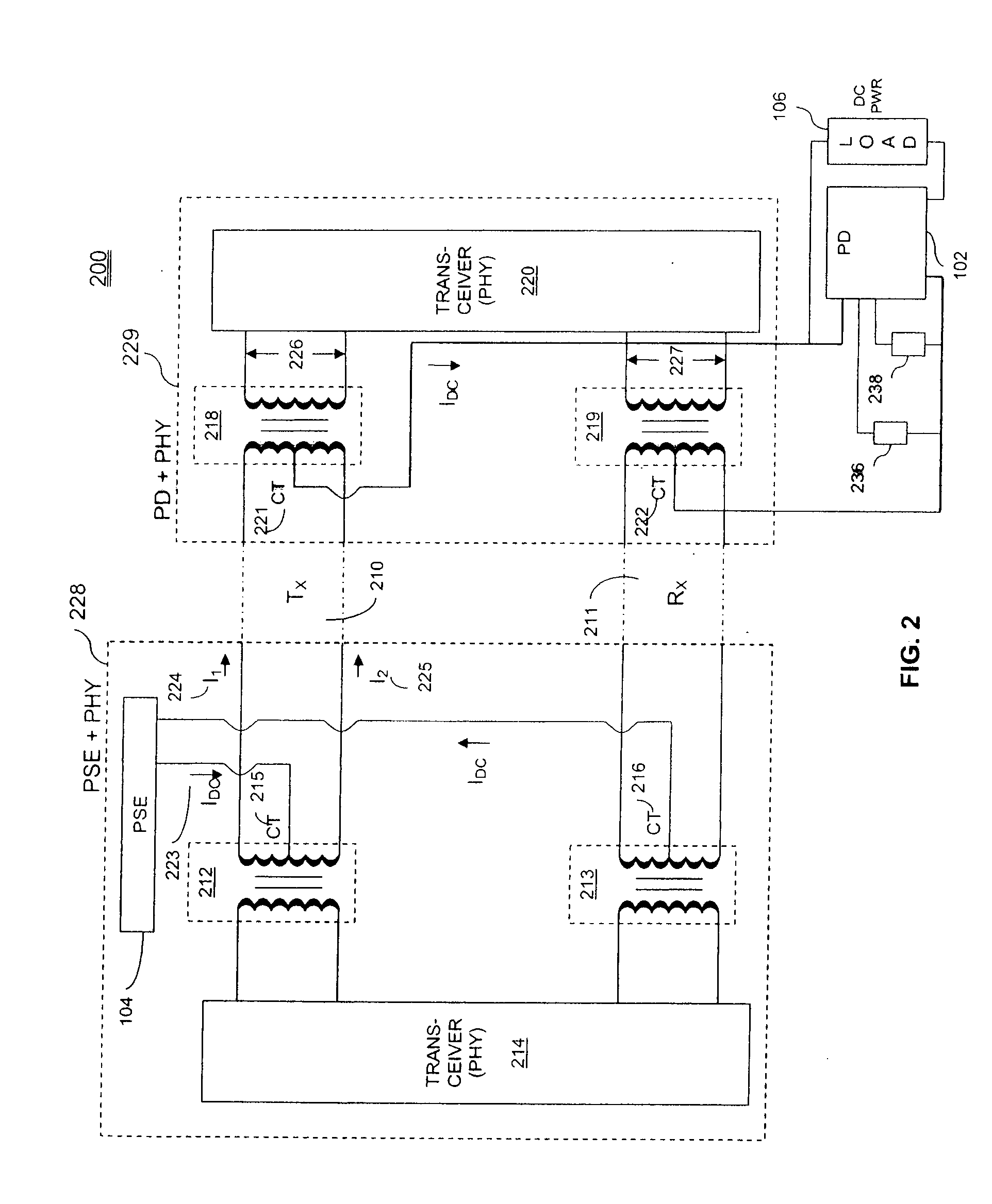Powered device power classification with increased current limit
a technology of power classification and current limit, which is applied in the direction of data switching details, process and machine control, instruments, etc., can solve the problem of consuming more power than the ieee 802.3afTM standard supports
- Summary
- Abstract
- Description
- Claims
- Application Information
AI Technical Summary
Problems solved by technology
Method used
Image
Examples
Embodiment Construction
[0020]The following discussion describes power classification for power transfer to Power over Ethernet (PoE) devices (or Powered Devices (PD)). FIG. 1 illustrates a conventional powered device chip architecture 100, with a powered device chip (PD) 102 connected to a power sourcing equipment chip (PSE) 104 and a load 106. The PSE 104 monitors and controls the application of power to the PD 102. More specifically, a PSE detects and validates a compatible PD, optionally determines a power classification for the validated PD, supplies power to the PD, monitors the power, and reduces or removes the power from the PD when the power is no longer requested or required. During detection, if the PSE finds the PD to be non-compatible (not valid), the PSE can prevent the application of power to that PD device, protecting the PD from possible damage. IEEE has imposed standards on the detection, power classification, and monitoring of a PD by a PSE in the IEEE 802.3af™ standard, as will be discu...
PUM
 Login to View More
Login to View More Abstract
Description
Claims
Application Information
 Login to View More
Login to View More - R&D
- Intellectual Property
- Life Sciences
- Materials
- Tech Scout
- Unparalleled Data Quality
- Higher Quality Content
- 60% Fewer Hallucinations
Browse by: Latest US Patents, China's latest patents, Technical Efficacy Thesaurus, Application Domain, Technology Topic, Popular Technical Reports.
© 2025 PatSnap. All rights reserved.Legal|Privacy policy|Modern Slavery Act Transparency Statement|Sitemap|About US| Contact US: help@patsnap.com



